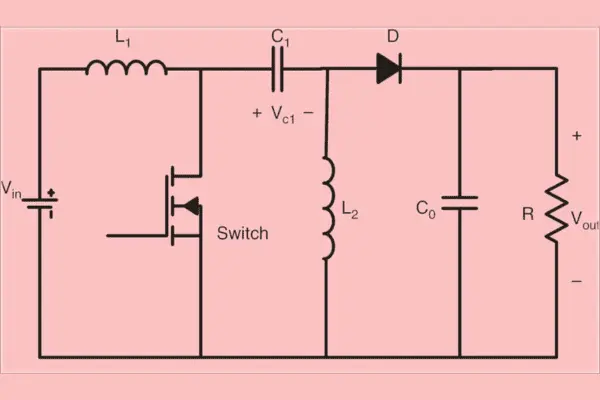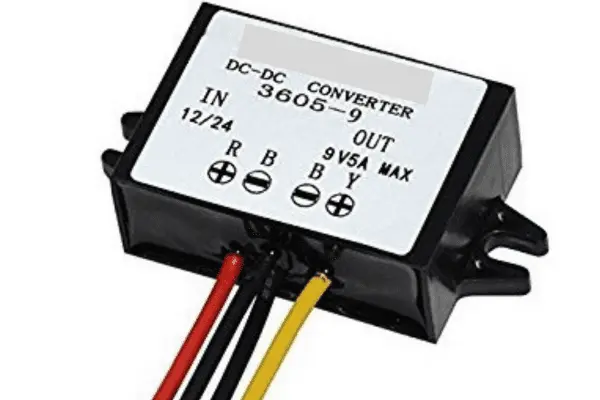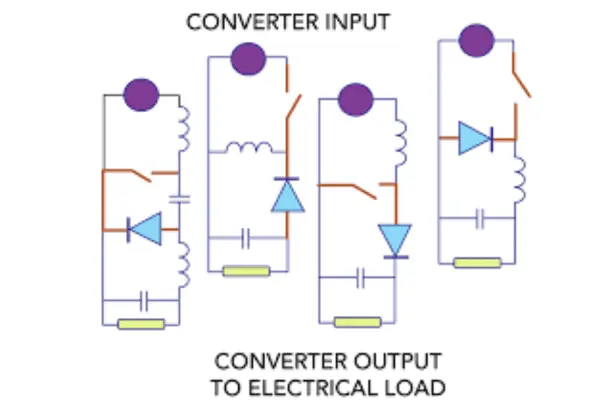Introduction
In the rapidly changing electronics industry, where dependability, energy efficiency, and downsizing are critical factors, DC-to-DC converters have become essential parts. The foundation of contemporary commercial, industrial, and consumer electronic systems is made up of these converters. They guarantee that electrical devices run at the ideal voltage and current levels, whether in renewable energy installations, electric cars, or medical equipment.
We at Dorleco recognize the value of effective power management solutions. The basic ideas of DC-to-DC converters, their various varieties, and how to select the best one for your needs will all be covered in this blog. With this information, you’ll be able to make wise choices that maximize the dependability and performance of your system.

1.What is a converter that converts DC to DC?
An electronic circuit that changes the level of direct current (DC) voltage is called a DC-to-DC converter. DC-to-DC converters use switching regulators to achieve voltage regulation, usually without the usage of large transformers, in contrast to AC transformers, which run on alternating current.
Regardless of variations or variations in the power source, the primary purpose of these converters is to guarantee that devices receive the appropriate voltage level. This is crucial for preserving the converter’s and the linked electronic components’ longevity, effectiveness, and safety.
2.Why Do We Need DC-to-DC Converters?
DC-to-DC converters are important because they can:
Optimize Power Efficiency: By balancing the supply and demand of voltage, power losses can be minimized.
Stabilize Voltage Levels: Guard against voltage swings that could harm delicate electronics.
Increase System Flexibility: Make it possible for a variety of parts to run off of a single power source.
Reduce Heat Generation: Excess heat is reduced via high-efficiency conversion, which eliminates the need for large cooling systems.
Increase Battery Life: Especially helpful for battery-powered devices like mobile robotics, drones, and EVs.
These advantages directly translate into reduced operating costs and improved system reliability for companies that depend on automation, renewable energy, or smart electronics.
3. DC-to-DC Converter Types

To make sure your design satisfies performance requirements, it is crucial to comprehend the distinctions between the primary kinds of DC-to-DC converters. The three main categories are:
A. Step-Down Converter, or Buck Converter
Function: Lowers an output voltage by reducing a greater input voltage.
Principle of Operation:
uses an inductor, diode, and high-speed switching element.
Energy is stored when the switch is closed because current passes through the inductor.
The inductor’s stored energy is released to the load at a lower voltage when the switch opens.
Uses:
- Systems for industrial automation
- Circuits for LED lighting
- EV auxiliary systems (e.g., 12V subsystems powered by a 48V battery)
Benefits:
- High effectiveness (up to 95 percent)
- Low production of heat
- Simple and dependable circuit design
B. Step-Up Converter (Boost Converter)
A lower input voltage is raised to a greater output voltage using this function.
Principle of Operation:
- The inductor stores energy when the switch is closed.
- A diode that has a greater voltage than the input transfers energy to the load when the switch is opened.
Uses:
- Devices that run on batteries (such as 3.7V lithium-ion batteries that can be increased to 5V)
- Renewable energy systems (such as increasing the production of solar panels)
- RF and communication systems
Benefits:
- permits low-voltage sources to power high-voltage devices.
- Effective power transmission in low-voltage settings
C. Step-Up/Step-Down Converter, or Buck-Boost Converter
Function: Depending on the needs, the input voltage can be increased or decreased.
Principle of Operation:
- Uses an inductor to store energy during the switches on phase and release it at a variable voltage during its off phase.
- Depending on the application, it is possible for the input and output voltages to differ.
Uses:
- Electronics that are portable
- Systems for cars with variable battery voltages
- Medical supplies
Benefits:
- Adaptable in controlling voltage
- Perfect for systems with fluctuating input voltages
- Small and versatile
3. Selecting an Appropriate DC-to-DC Converter
Ultimately, your system’s performance, dependability, and efficiency all rely on the DC-to-DC converter you choose. Therefore, the primary considerations are as follows:
A. Requirements for Input and Load
Range of Input Voltage: Verify that the converter can manage the variations in your power supply.
Output Voltage & Current: Comply with the operating standards of your device.
B. Thermal Management and Efficiency
Therefore, to effectively minimize energy loss and consequently reduce heat output, it is crucial to select converters with high efficiency.
Because thermal performance is crucial for small systems, seek out features such as synchronous rectification or spread spectrum modulation to enhance heat management and efficiency.
C. The Form and Size Factor
Modern electronic designs sometimes demand smaller, surface-mount converters due to space constraints.
Additionally, assess the converter’s mechanical compatibility with your existing hardware to ensure seamless integration.
D. Aspects of the Environment
For instance, imagine operating in conditions with constant vibrations, moisture, dust, and fluctuating temperatures.
Therefore, for outdoor or industrial applications, it is important to select ruggedized converters that feature protective coatings or enclosures to ensure durability and reliable performance.
E. Security and Compliance
Additionally, ensure adherence to safety regulations such as ISO, RoHS, or UL to guarantee compliance and maintain product reliability.
Moreover, system safety relies on features such as thermal shutdown, under-voltage lockout (UVLO), and over-voltage protection (OVP) to prevent damage and ensure reliable operation.
4. DC-to-DC Converters in Real-World Applications;

Electric Vehicles (EVs)
Systems for Solar Power
Since solar panels produce variable voltage, boost converters are essential for raising and stabilizing this voltage—especially for applications involving grid integration or battery storage.
In the realm of industrial automation, precise voltage levels are essential for control circuits and PLCs. Therefore, to maintain these levels, buck or buck-boost converters are employed, as they enhance precision and improve system uptime by ensuring consistent voltage stability.
Equipment for Telecommunication
In telecom base stations, dependable voltage management is essential; consequently, DC-to-DC converters play a crucial role by consistently powering signal processing devices.
6. The Function of Dorleco in Power Conversion Products
Our specialty at Dorleco is offering both off-the-shelf and custom DC-to-DC converters that adhere to strict industry standards. Whether you want to include power electronics into a new design or improve your current systems, we provide:
- Technical Consultation: Our professionals assist you in choosing the ideal converter for your requirements.
- High-Performance Products: Sturdy, effective converters for use in automotive and industrial settings.
- Scalable Solutions: From applications on a single device to extensive implementation in automation systems and EVs.
Additionally, we offer CAN Keypads, VCUs, and CAN Displays—all essential parts that work well with sophisticated power regulation systems.
7. New Developments in DC-to-DC Converters
A. Management of Digital Power
Moreover, the integration of microcontrollers allows for dynamic performance adjustments in DC converters, enabling greater adaptability and control.
B. Silicon carbide (SiC) and gallium nitride (GaN)
C. Energy Harvesting
IoT devices may now operate continuously on ambient energy sources including heat, vibration, and light thanks to ultra-low power converters.
Conclusion
Building dependable, effective electronic systems requires an understanding of the types and functions of DC-to-DC converters. Converters that are buck, boost, or buck-boost each have certain benefits and are appropriate for particular uses. When choosing the best converter, you must carefully take into account voltage levels, system requirements, efficiency requirements, and environmental factors.
Our goal at Dorleco is to assist you in achieving power system excellence. We offer the resources and know-how you require, whether you’re an engineer developing the next electric vehicle or a site manager modernizing industrial controls.
Explore our diverse selection of products and technical resources to enhance the robustness, efficiency, and intelligence of your power solutions. Whether you’re aiming to improve system reliability, boost performance, or integrate smarter technologies, we design our offerings to meet your evolving needs.
Get in touch with us at info@dorleco.com right now to order VCUs, CAN Keypads, CAN Displays, and more, or to discuss your application.
Entrust your inventions to Dorleco’s dependable and effective power.


